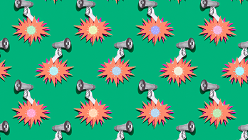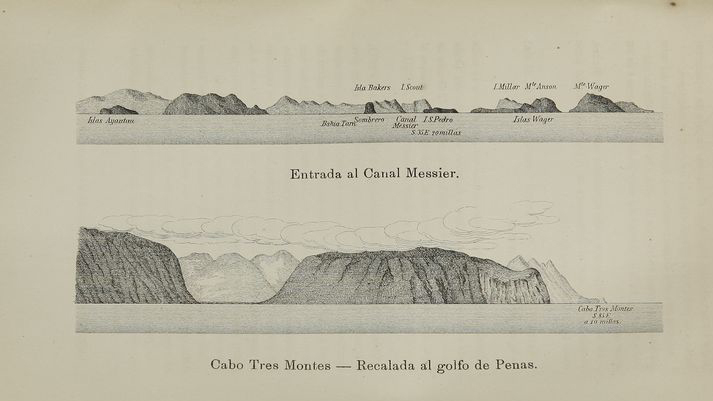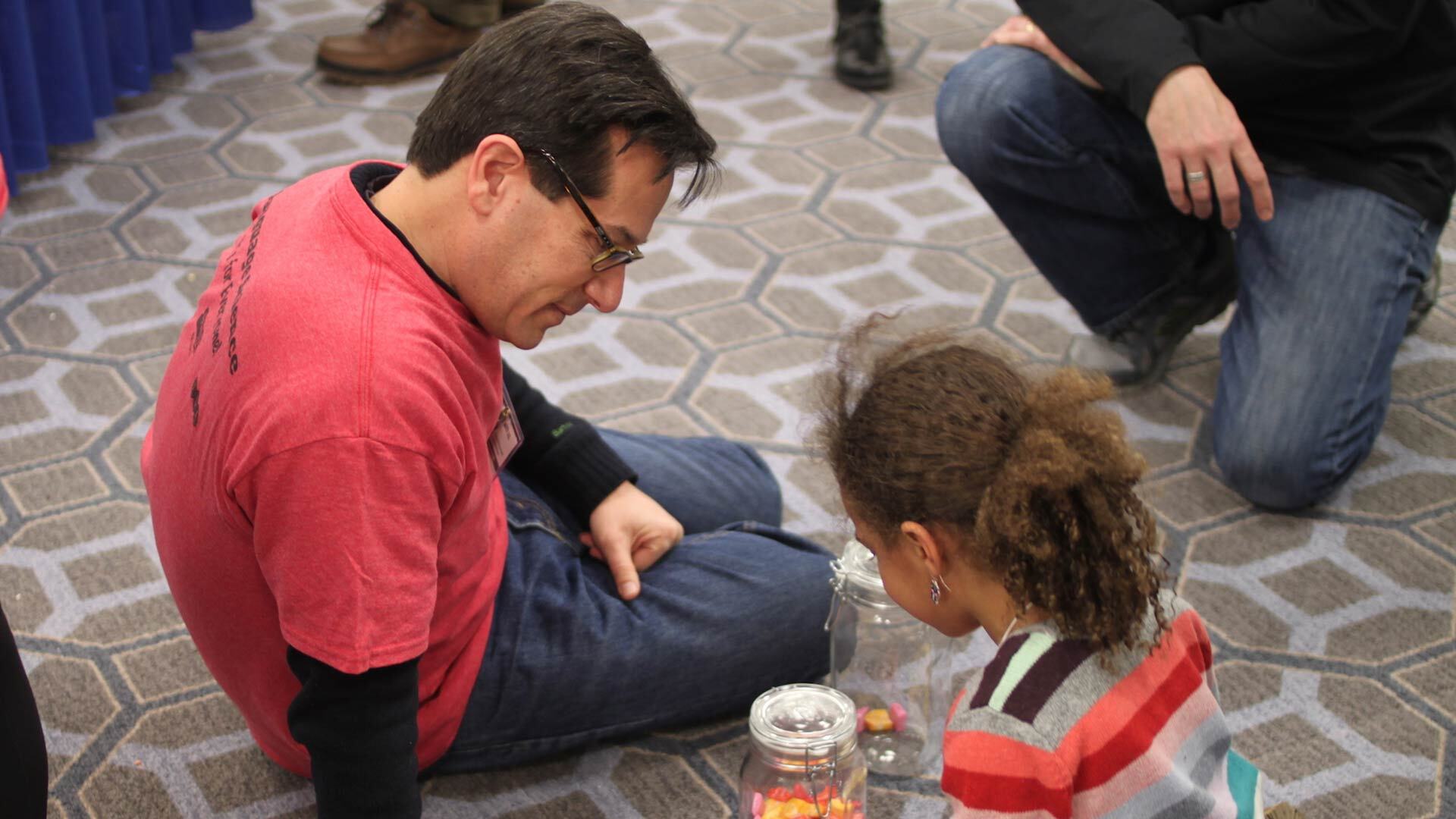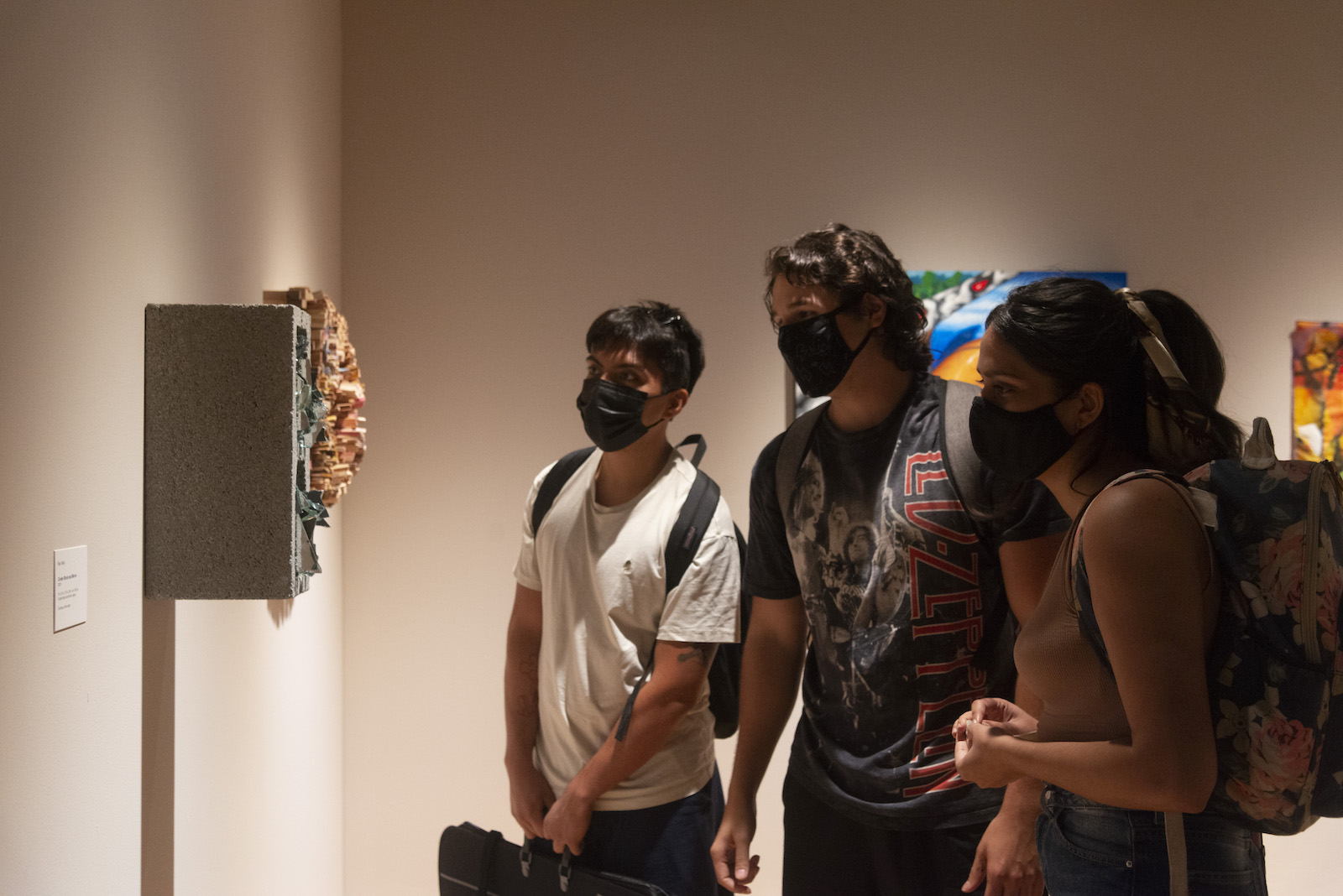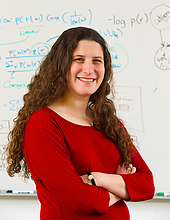By Jessica Weiss ’05
As the COVID-19 pandemic worsened in early 2020, Lecturer in the Department of Art Mollye Bendell felt a growing anxiety that the last time she would see her loved ones might be on a video call.
Bendell, who works with electronic media to explore themes of vulnerability, visibility and longing, began to attempt to preserve her friends and family through her work using images of their faces from video chats.
In her video project “Sketch for Sleepers,” Bendell projects those images in 3D onto stock digital silhouettes of human bodies that float across a screen.

The work is on display now until Dec. 3 at the University of Maryland Art Gallery as part of a triennial exhibition of professional work by Department of Art faculty and adjunct faculty. Part of the campuswide Arts for All initiative, which seeks to spark new ways of thinking through collaborations across the arts, sciences and other disciplines, Faculty Exhibition 2021 showcases works from 20 faculty members in a range of mediums. It is the first in-person art exhibition held at the Art Gallery since it closed in March 2020.
“The exhibition honors faculty work while emphasizing that their scholarship and teaching is grounded first and foremost in an art-making practice,” said Art Gallery Associate Director Taras W. Matla. “Having been closed for 18 months due to the pandemic, this is a terrific way to reintroduce the Art Gallery and art department faculty to the campus community.”
Professor of Art Foon Sham’s “Covid 19, 2020” wood and acrylic wall sculpture emerged from elements related to his state of mind during lockdown. It’s made of wooden sticks that represent the many people affected by the virus.

“There are various colors of wood sticks and some are stained with red and blue, implying all the damage this virus could do,” he said.
Many of the works also address socio-political issues and social justice. For instance, Lecturer Julia Kwon’s “Dissent” is inspired by the fight for abortion rights, via the format of traditional Korean object-wrapping cloth with embedded patterns. And Assistant Professor Jessica Gatlin’s “Work Related” is a series of wearable canvas “paintings” that comment on themes of sustainability, labor, consumption and capitalism.
Assistant Professor Cy Keener, whose work blends art, science and technology, is exhibiting “Terminal Front,” a virtual reality experience that allows people to visit a remote and uninhabitable landscape in Greenland. Using scientific data gathered from the site—via custom laser scanners built by the Army Corps of Engineers Cold Regions Research and Engineering Laboratory—paired with detailed drone photography, the VR user can immerse in a massive and detailed landscape of a glacier’s surface.
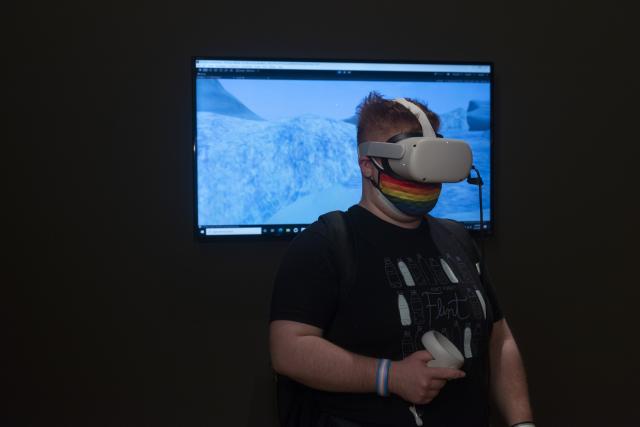
Keener and Bendell are among faculty instructors in the new immersive media design major, co-taught by faculty from the Department of Art and the College of Computer, Mathematical, and Natural Sciences. The program prepares students to use digital tools and technologies including virtual and augmented reality, digital art, projected imagery, computer graphics, 3D modeling and user interfaces spanning audio, visual and tactile platforms.
Additional participating faculty artists include: Emily Conover, Patrick Craig, Pete Cullen, Brandon Donahue, Wendy Jacobs, Richard Klank, Matthew McLaughlin, Brandon Morse, Irene Pantelis, Narendra Ratnapala, John Ruppert, Justin Strom, Athena Tacha, Jowita Wyszomirska and Rex Weil.
In addition, an In Memoriam section recognizes the vast contributions to the Department of Art made by longtime faculty members David C. Driskell (1931-2020) and James Thorpe (1951-2021).
Visit the Faculty Exhibition 2021 at the University of Maryland Art Gallery in the Parren J. Mitchell Art-Sociology Building until Dec. 3, 2021. Free and open to the public, Monday-Friday, 11 a.m.-4 p.m.
Photos from top to bottom of page: Visitors at Faculty Exhibition 2021; Mollye Bendell's video project “Sketch for Sleepers;" Foon Sham’s “Covid 19, 2020; " A visitor experiences Cy Keener’s “Terminal Front.” Photos by Thai Q. Nguyen.

